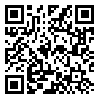BibTeX | RIS | EndNote | Medlars | ProCite | Reference Manager | RefWorks
Send citation to:
URL: http://hayat.tums.ac.ir/article-1-4-en.html

 , Ladan Astaraki *
, Ladan Astaraki * 
 2, Zahra Behboodi Moghadam3
2, Zahra Behboodi Moghadam3 
 , Ziba Taghizadeh4
, Ziba Taghizadeh4 
 , Hamid Haghani5
, Hamid Haghani5 

2- MSc. in Midwifery ,
3- Dept. of Midwifery, School of Nursing and Midwifery, Tehran University of Medical Sciences, Tehran, Iran
4- Dept. of Midwifery, School of Nursing and Midwifery, Tehran University of Medical Sciences, Tehran, Iran; Nursing and Midwifery Care Research Center, Tehran University of Medical Sciences, Tehran, Iran; Ph.D Candidate in Reproductive Health, School of Nur
5- Dept. of Biostatistics, School of Management and Information Technology, Tehran University of Medical Sciences, Tehran, Iran
Background & Aim: Maternal-fetal attachment plays an important role in maternal identity forming. The attachment behavior is different between mothers and most of the reported studies are from Western countries. The aim of this study was to assess maternal-fetal attachment behavior and some related factors among Iranian mothers.
Methods & Materials: This cross-sectional study was carried out in 12 health and medical centers, affiliated to Tehran University of Medical Sciences. Four hundred pregnant women were selected for the study. Data were gathered using two questionnaires. The first one was a self-structured questionnaire and the second one was the maternal-fetal attachment scale. Data were analyzed using the Pearson, Anova and t-test statistical tests. The P<0.05 denoted statistical significance.
Results: Findings showed that the mothers had good attachment toward their fetuses (M=84.72). The race, higher maternal age, higher education, gestational age, planned pregnancy, sex of fetus, and assessing health of fetus had positive effects on prenatal attachment (P<0.05). Tobacco use, multiparity, and high risk pregnancy had negative effects on attachment. There were no relationships between attachment and previous marriage, infertility, abortion, number/type of ultrasound, participation in prenatal classes and healthy baby (P>0.05).
Conclusion: Understanding maternal-fetal attachment behavior could play an important role in quality of prenatal care. Midwives can assess and promote attachment behavior as well as recognize factors influencing maternal-fetal attachment.
| Rights and permissions | |
 |
This work is licensed under a Creative Commons Attribution-NonCommercial 4.0 International License. |



